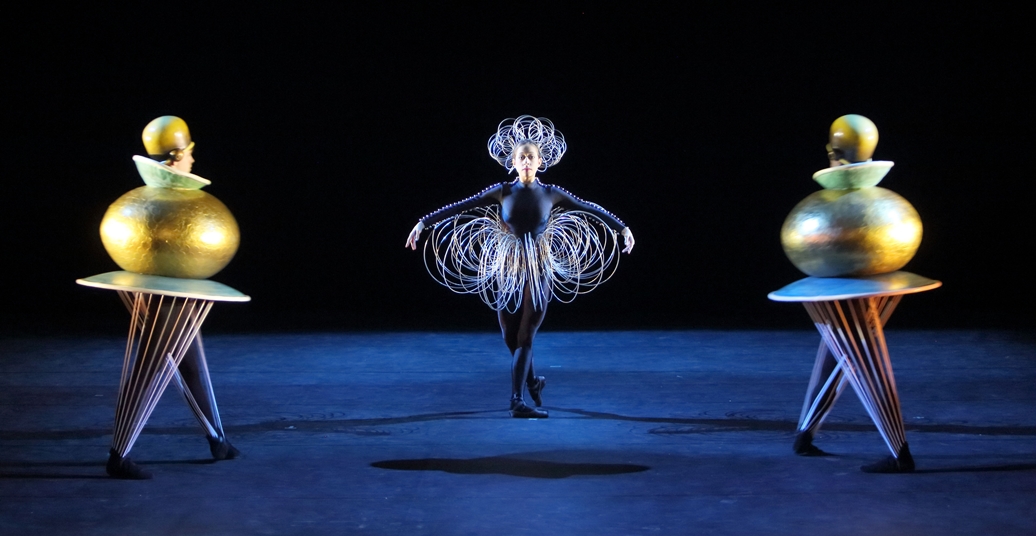“Das TriadischeBallett” is a Bauhaus classic. Oskar Schlemmer’s sculptural costumes and mechanical choreography – based on the influential school’s modernist principles of uniting colour and form – are set to a squealing, post-war composition by Hans-Joachim Hespos. The Potsdamer Tanztage celebrated one hundred years of Bauhaus with a tribute to this seminal piece, enlivened by the 1977 version of the choreography by Gerhard Bohner, and embodied by the Bayerische Junior Ballett München.
Yellow.
While Neil Harbisson has already been recognised as the world’s first cyborg, and technology is increasingly integrated into our clothes, skin and internal organs – our perception of the human body is rapidly changing. In the opening scene of “The Triadic Ballet”, a solitary, composed figure stands alone in a stiff, triangular skirt, her hands pointing sharply outwards. Her mechanised body, though abstract and surreal, is reminiscent of the avatars populating our screens. Perhaps Schlemmer, long before the rise of Nintendo and World of Warcraft, was building a computer game for the stage. An invisible grid of squares and clean diagonals is inhabited by further characters: a joker in a quilted unitard holding a wand-like baton and a girl in a perfectly circular, red-spotted tutu. With white faces and red, round cheeks they look like strange dolls in an empty landscape. Oddly decontextualised, they could just as well be pulling faces in an untouched Minecraft world.
Red.
Bizarre exchanges unfold between the characters. They appear to be speaking to one another, but their conversations are just out of grasp. Things happen, that lead, in turn, to other things happening, in an infinite vacuum with no clear narrative. At times, the costumes fit together like the pieces of a puzzle, and two characters become one in a bizarre accumulation of moving shapes. These moments are, however, rare: most of the time, the dancers move independently, exaggerating the distance between them. The frontal plane is emphasised as the performers scuttle across the stage sideways, as if to conceal their three-dimensional existence. If there is a rhythm in the music, it is indistinct. At times it is just noise, at others bells or strings crystallise in solos. A sudden explosion is ever on the horizon.
Black.
One, two, three, change. Precise like a dotted line. Orange, red, blue, purple. Why do the men all transform into crazy clowns and mystic creatures while the women remain women? If the costumes already lend themselves to, as Schlemmer describes it, a ‘party in form and colour’ and are essentially abstract lines and shapes, how come the characters are still so gendered? Perhaps it is up to modern-day choreographers to take the next step and swap the roles around. Every new re-staging and re-imagining of this ballet, so ahead of its times, should not be so shy to update not only its players, but also its progressive worldview.




